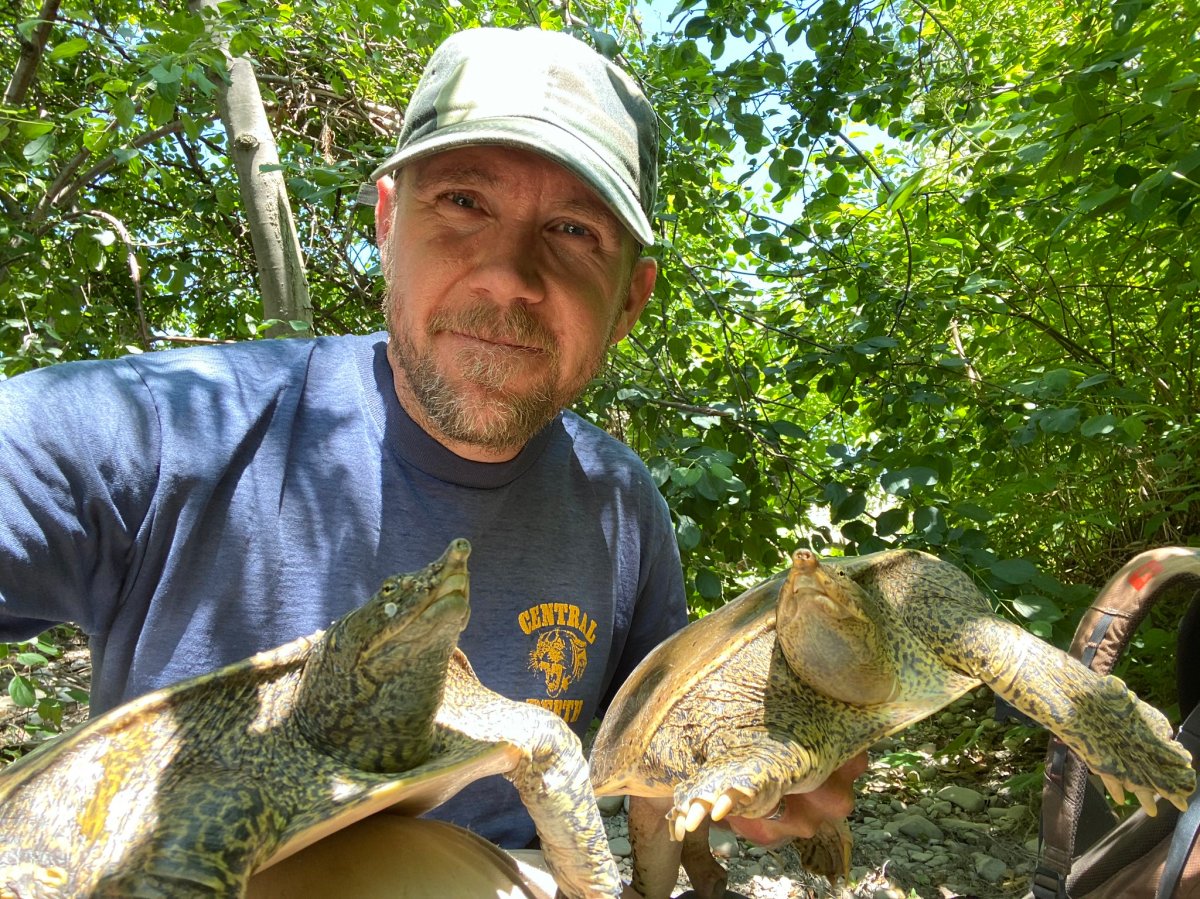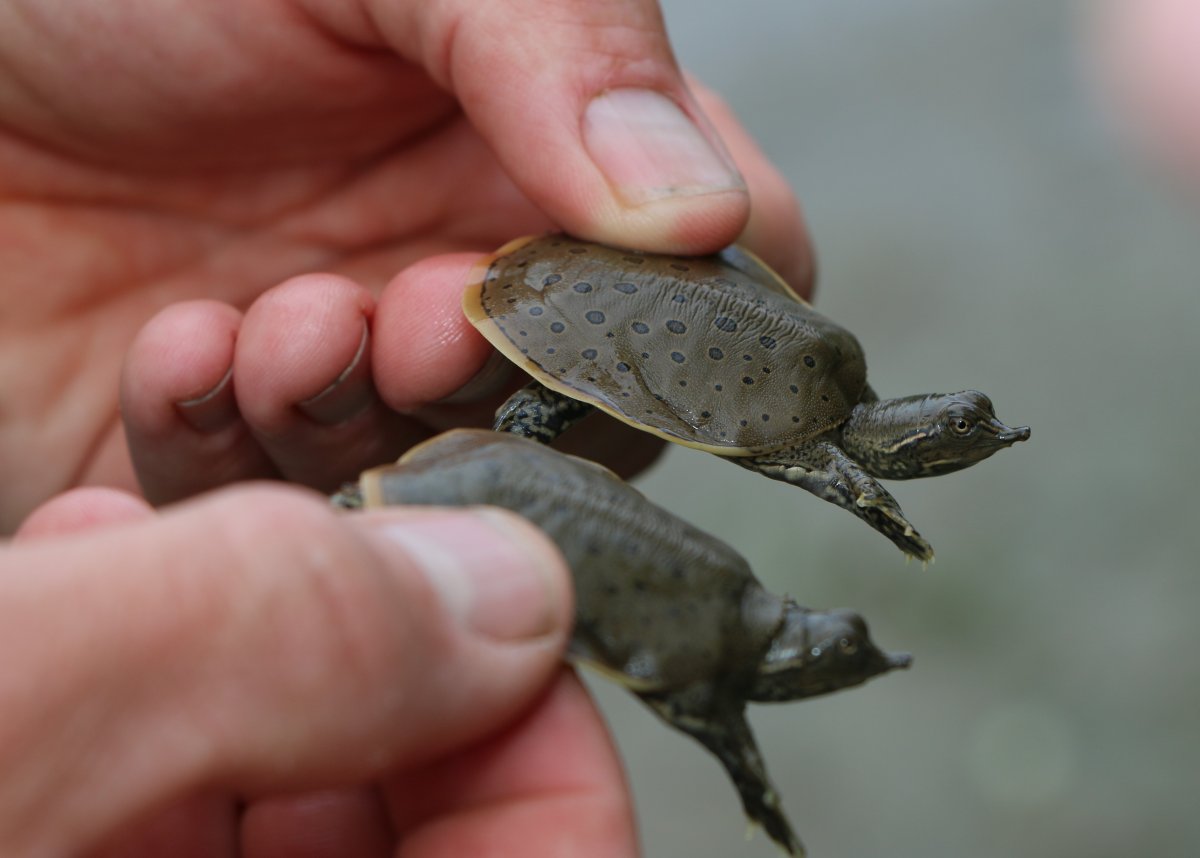CORRECTION — March 4, 2022: A previous edit of this article incorrectly characterized the province as having “pulled” funding for SOARR. The province chose not to continue funding the project through its Species At Risk Stewardship Program, and says all prior funding agreements related to SOARR were fulfilled. Global News regrets the error.

One of the country’s longest-running research and recovery programs dedicated to at-risk reptiles is in need of financial help from the public after the province chose not to continue allocating funding to the initiative, the Upper Thames River Conservation Authority (UTRCA) says.
The Ontario government had partially funded the program, Southern Ontario At Risk Reptiles (SOARR), since 2007. The provincial dollars accounted for roughly 36 per cent of the program’s total funding, UTRCA officials say.
The SOARR program was launched in 1994 and has helped rebound southern Ontario’s once dwindling spiny softshell turtle population and other reptile species, including Blanding’s turtles, spotted turtles, eastern hog-nosed snakes and queensnakes.
“This year, we actually set all the priorities, all the goals perfectly. We’ve been doing this for a lot of years, we know what we’re doing. We were pretty confident we were going to get the funding,” said Scott Gillingwater, a species-at-risk biologist with UTRCA who has been involved with SOARR since its inception.
- Invasive strep: ‘Don’t wait’ to seek care, N.S. woman warns on long road to recovery
- Ontario First Nation declares state of emergency amid skyrocketing benzene levels
- T. Rex an intelligent tool-user and culture-builder? Not so fast, says new U of A research
- Nearly 200 fossil fuel, chemical lobbyists to join plastic treaty talks in Ottawa
Those involved with the SOARR program submitted an application for funding in February 2021, but didn’t find out until after the field season was finished in November that the grants, set to cover a three-year period until 2023, weren’t coming, Gillingwater said.
“There’s some questions that have come up, just because we have received different inputs from different members of the (Ministry of the Environment, Conservation and Parks) so we are kind of left with a lot of questions,” he said.
In a statement, Phillip Robinson, press secretary for the Ministry of Environment, Conservation and Parks told Global News that no project is guaranteed indefinite funding through the Species at Risk Stewardship Program, or SARSP, and that funding is allocated through a competitive process.
Robinson said the ministry received 83 applications for SARSP funding totalling $8.4 million, nearly double the $4.5 million budgeted for the program.
“Projects were selected with the help of over 30 species and conservation experts from the Ministry of the Environment, Conservation and Parks and Ministry of Natural Resources and Forestry,” he said.
“These experts evaluated projects based on identified priorities including: addressing species-specific priorities; conducting research; addressing threats (mitigation); and value for money.”
Among those to see SARSP funding are 8Trees, which will receive $226,000 to restore the Wainfleet Bog in the Niagara Peninsula for Blanding’s Turtles, and the Canadian Wildlife Federation, which will receive $169,000, he said.
Though the SOARR program also receives federal funding and funding from local partners, Gillingwater says without money from the province, more help will be needed from the community for the program to continue operating “at any level beyond very local and for only part of the year.”
“We are unable to function if we don’t get the outside funding that we need. It’s not something that the conservation authority can fund on their own,” he said.
As a result, a fundraising drive has been launched, which Gillingwater and the UTRCA hope will secure stable, long-term funding for the program and the important work that it does.
“It’s not just reptiles at risk that benefit from the work that we do. A number of species benefit from the habitat creation, habitat protection, community education and other things that we do out in the field and in the community,” he said.
A key example of the conservation work conducted by SOARR involves the spiny softshell turtle, whose population was rapidly declining when the program was first launched in 1994.
At the time, Gillingwater said conservationists found the local population comprised mostly large adult turtles, with few young turtles in the mix as a result of nests being lost.
In 1996, the program began to dedicate more time to protecting the nests. Initially, nests were protected with physical cages, but since then, Gillingwater says all eggs are now removed to a lab for incubation to avoid poachers, predators and extreme weather, such as flooding.
Once the hatchlings emerge from the eggs after 55 to 65 days of incubation, they’re then released back into the Thames River in the area where the eggs were retrieved.
“We were able to initially save maybe 35 to 50 nests, whereas last year we saved about 250 nests and that resulted in about 4,000 young being released into the wild,” Gillingwater said, noting that not all the young will reach maturity.
“So from a declining population of aging adults to a more robust population with various age classes and an increasing number of nests being laid each season by young, newly matured females.”

Nearly 30 years after the program began, Gillingwater said there are now between 1,500 and 2,000 spiny softshell turtles in all of Canada. Roughly 600 of them are in the Thames River.
The species is still considered endangered by the province and federal government, however, making the work SOARR does that much more vital.
“With consistent community support, we can make a real difference for these species in the watershed and outside of the watershed, ensuring that our kids and grandkids are able to observe these unique species, and species that are vitally beneficial to our local ecosystem,” Gillingwater said.
More information on how to support the Southern Ontario At Risk Reptiles program can be found on the UTRCA website.








Comments